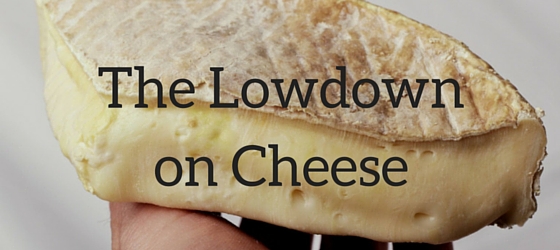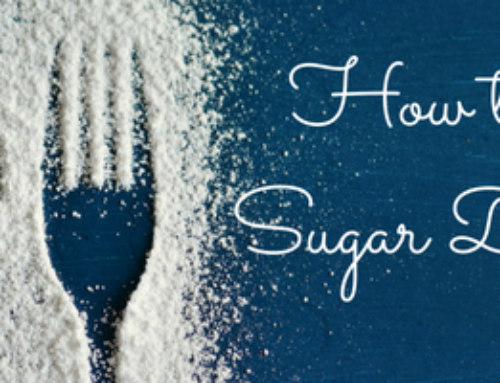Ah, cheese. Most people like it, but many might think that they shouldn’t eat it. Why? Because it is high in fat, especially the saturated kind, and high in calories. Well, yes cheese is high in fat, and most of it is saturated fat. But saturated fat isn’t nearly as bad for you as you might have been led to believe. The good news is that saturated fat has finally been vindicated after many years of being a nutritional demon. More on that to come. But there may be other reasons to avoid cheese, or at least cut back. Let’s break it down.
The primary reason to avoid cheese would be if you have either lactose intolerance or a food allergy/sensitivity to dairy. Lactose intolerance is when the digestive system does not produce enough of the enzyme lactase to digest the milk sugar, or lactose found in diary. Consequently, when dairy is ingested, stomach upset, distention, gas, and even pain can occur. Not fun. Individuals can have varying degrees of lactose intolerance, and as well, some cheeses are higher in lactose than others. So if you have a lactose intolerance, especially if it is more mild, it can be helpful to learn the lactose content of various kinds of cheese, so you can enjoy low lactose cheeses like cheddar, parmesan, and swiss. One could also have a food sensitivity to dairy, in that the body produces an immune response when eaten. This means that dairy causes some kind of physically reaction. Food sensitivities, unlike food allergies, can be hard to decipher because there may not be an immediate reaction to the food. Physical symptoms can be delayed, making it difficult to pin point the food culprit. Doing an allergy elimination diet, or food sensitivity test can be very helpful in determining food sensitivities. Contact me if you would like to find out if this testing can help you.
As far as calories, yes, cheese is high calorie. One ounce of cheese, which is 1¼ inch cube, is roughly 100 calories. Check out the chart below for full caloric details on all your favorite cheeses. Now I would argue that one ounce or even two ounces of cheese can be enjoyed from time to time if you don’t have a sensitivity. The problem for some though is that they love cheese, and it is just too hard to keep portions in check. For those individuals, it may be best to keep favorite cheeses out of the house. Opting for cheeses you are less likely to overeat like blue cheese, feta, goat’s cheese, or parmesan is another strategy that can work. Use these flavorful cheeses as an accent to salads or other dishes.
But shouldn’t you avoid cheese because it is high in saturated fat? Well, it turns out saturated fat isn’t nearly as bad for us as we once thought. A recent meta-analysis study pooled the data from 21 unique studies that included almost 350,000 people tracked over an average of 14 years and about 11,000 developed cardiovascular disease. This large meta-analysis concluded that there is no relationship between the intake of saturated fat and the incidence of heart disease or stroke. In other words: eating saturated fat doesn’t cause heart disease.
What’s the bottom line? Go ahead and enjoy a bit of cheese if it agrees with your body. I am not going to go as far as to say cheese is a super food, but it does provide a source of calcium, fat, and protein. If you have blood sugar imbalances like prediabetes or diabetes, you may understand the importance of eating more fat. Fat does not raise blood sugar, so it is very helpful to eat a higher percentage of fat in your daily diet to help balance your blood sugars. Finally, remember that many people feel better off dairy all together. I often suggest for clients to give it up for a period of two – three weeks just to see how they feel. They are often surprised at how low-lying symptoms like brain fog, congestion, and bloatedness disappear. Lastly, for those of you wanting to know more about the nutritional facts on cheese, I’ve listed an extensive list here:
| Cheese | Calories | Fat (g) | Protein (g) |
| Asiago (1 oz) | 107 | 8 | 8 |
| Asiago shredded (1 Tbsp) | 25 | 2 | 2 |
| Blue (1 oz) | 100 | 8 | 6 |
| Brie-sliced (1 oz) | 95 | 8 | 6 |
| Camembert (1 oz) | 85 | 7 | 6 |
| Cheddar (1 oz) | 115 | 9 | 7 |
| Cheddar-shredded (1 Tbsp) | 29 | 2 | 2 |
| Colby (1 oz) | 112 | 9 | 7 |
| Colby –shredded (1 Tbsp) | 28 | 2 | 2 |
| Cream Cheese(1 oz) | 99 | 9 | 2 |
| Cream Cheese-lowfat (1 oz) | 65.5 | 5 | 3 |
| Edam (1 oz) | 101 | 8 | 7 |
| Feta (1 oz) | 75 | 6 | 4 |
| Feta (1 Tbsp) | 41 | 3 | 2 |
| Fontina (1 oz) | 110 | 9 | 7 |
| Goat Cheese- soft (1 oz) | 76 | 6 | 5 |
| Gorgonzola (1 oz) | 111 | 9 | 7 |
| Gouda (1 oz) | 101 | 8 | 7 |
| Gruyere (1 oz) | 117 | 9 | 8.5 |
| Havarti (1 oz) | 105 | 8 | 7 |
| Limburger (1 oz) | 93 | 8 | 6 |
| Monterey Jack (1 oz) | 106 | 9 | 7 |
| Monterey Jack shredded (1 Tbsp) | 26 | 2 | 2 |
| Mozzarella Whole Milk (1 oz) | 90 | 7 | 6 |
| Mozzarella Part Skim Milk (1 oz) | 80 | 5 | 8 |
| Muenster (1 oz) | 104 | 8.5 | 7 |
| Neufchatel (1 oz) | 74 | 7 | 3 |
| Parmesan (1 oz) | 130 | 9 | 12 |
| Parmesan (1 Tbsp) | 25 | 2 | 2 |
| Port Du Salut (1 oz) | 100 | 8 | 7 |
| Provolone (1 oz) | 100 | 8 | 7 |
| Ricotta Whole milk (¼ cup) | 107 | 8 | 7 |
| Ricotta Skim milk (¼ cup) | 85 | 5 | 7 |
| Romano (1 oz) | 110 | 8 | 9 |
| Romano-grated (1 Tbsp) | 24 | 2 | 2 |
| Roquefort (1 oz) | 105 | 9 | 6 |
| Swiss (1 oz) | 105 | 8 | 8 |
| White cheddar (1 oz) | 115 | 9 | 7 |
1 oz of cheese is approximately a 1 ¼ -inch cube or 1 deli slice 4 in. x 4 in.
Please share your thoughts on cheese & diet below. I’d love to hear!
As always, if you found this blog post helpful, please share with family or friends.






